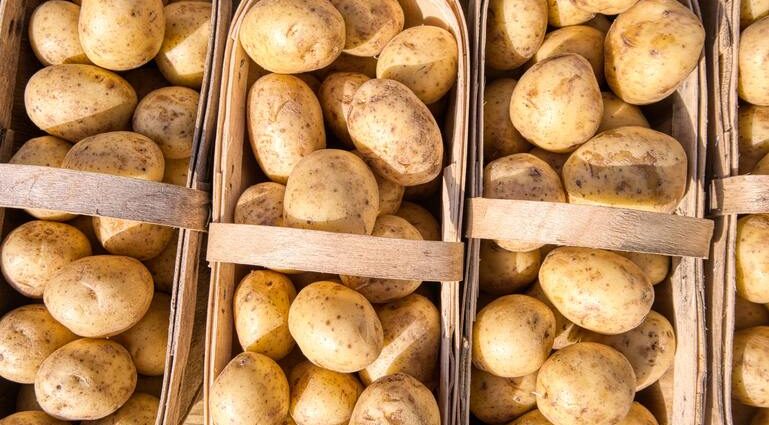Contents
Potato starch, popularly known as potato flour, is a white powder that is obtained by squeezing and draining the water from the potato tuber juice. This product can be easily obtained at home, but the easiest way is to get it at the grocery store.
Potato starch at home
Potato starch has raising and thickening properties – in the kitchen it is an indispensable ingredient of delicious fruit jelly, pudding and numerous types of noodles and cakes. Some people also recall the use of potato starch in the form of starch in the bathroom, giving the desired stiffness to the lace trim of clothing or table linen.
But there can be many more home applications of potato starch – as evidenced by the currently widely growing DIY trend (from English: do it yourself). As part of it, we are surprised to discover a completely new face of potato flour, which works, among others, as an ingredient of home deodorant or a powder that naturally mattifies the skin without any chemical additives.
Making homemade cosmetics from this product is not a particularly difficult task, which, combined with the relatively low price of potato starch, makes it an ideal proposition for people interested in producing their own beautifiers.
Potato starch powder will also help to naturally lift long hair slightly at the root, which tends to lie flat against the head. It is enough to start a little starch with a large brush. The effect will be enhanced by the performance of this treatment in a downward position and the gentle use of a dryer. Thanks to the potato starch powder, the hair should be less greasy and gain notable volume at the same time.
If you do not want to prepare home cosmetics, you can reach for hair care products available on Medonet Market. In particular, we recommend a normalizing shampoo, conditioner and scalp tonic from Vianek, which contain potato starch.
How to replace potato starch in the kitchen?
A kilogram of potato flour is usually used up slowly – it is a very efficient substance, so it is often enough for several months. We are so used to its presence in the cabinet on the shelf with products needed for baking cakes that we sometimes discover its absence – horror of horrors – when we start our favorite cheesecake or jelly. It is not necessary to run quickly to the store if we have a suitable replacement.
In order to effectively select a substitute, it is best to know what is the purpose of using potato starch in a given recipe. A function similar to it can be performed by corn starch, rice flour or even raw or cooked potatoes. And so – we can easily thicken jelly or pudding with corn starch (although it is worth remembering that it gives a characteristic texture), and the replacement for potato flour in the case of cheesecake can be a potato cooked in a uniform without salt, which we add to the mass after passing it through the press.
Of course, we can also consider the use of other home-made “powders” that contain potato starch: all puddings and jelly in bags. Then, however, it is worth considering the influence of the flavors added by the manufacturer on the overall taste of the dish – it is not worth trying to thicken the baking sauce with raspberry jelly, corn, rice or even plain wheat flour will be a better solution!
Potato starch for babies (and not only)
The beneficial effect of potato starch on chafing – and skin in general – is also one of the home tricks that is constantly growing in popularity. Antibacterial properties, which are used, among others, by a natural home antiperspirant with potato starch, perfectly support the fight against chafes and heat rash. A potato flour powder, used with every diaper change, helps to deal with the problem of redness and itching in this area in babies.
Dry, rough and irritated skin will be relieved by taking a bath with starch. It will soothe allergic reactions and reduce itching, and also allow the epidermis to be properly hydrated. The bath starch is prepared in the same way as the one for washing: you dissolve two heaped teaspoons of potato flour in a glass of earth water, and then combine it with hot water, stirring with a suitable tool so that no lumps form. Then the starch goes to the bathtub prepared for a bath.
Potato starch also copes well with blemishes on the skin and peeling skin on the crown (so-called cradle cap). A cotton ball or gauze soaked in starch is used to wash the affected areas. The exfoliated epidermis on the head can be combed out relatively easily thanks to this method.










